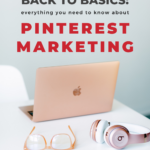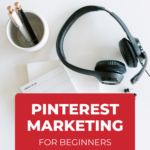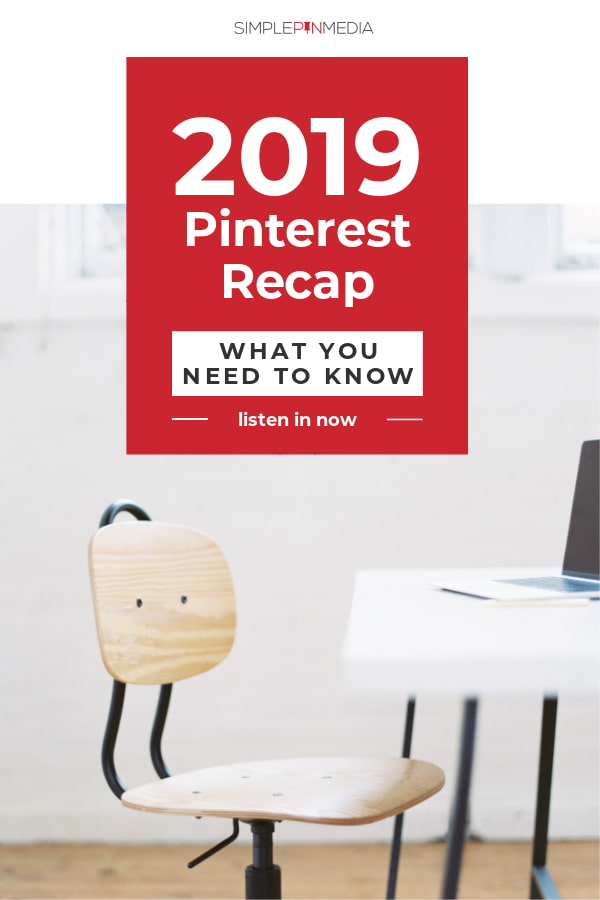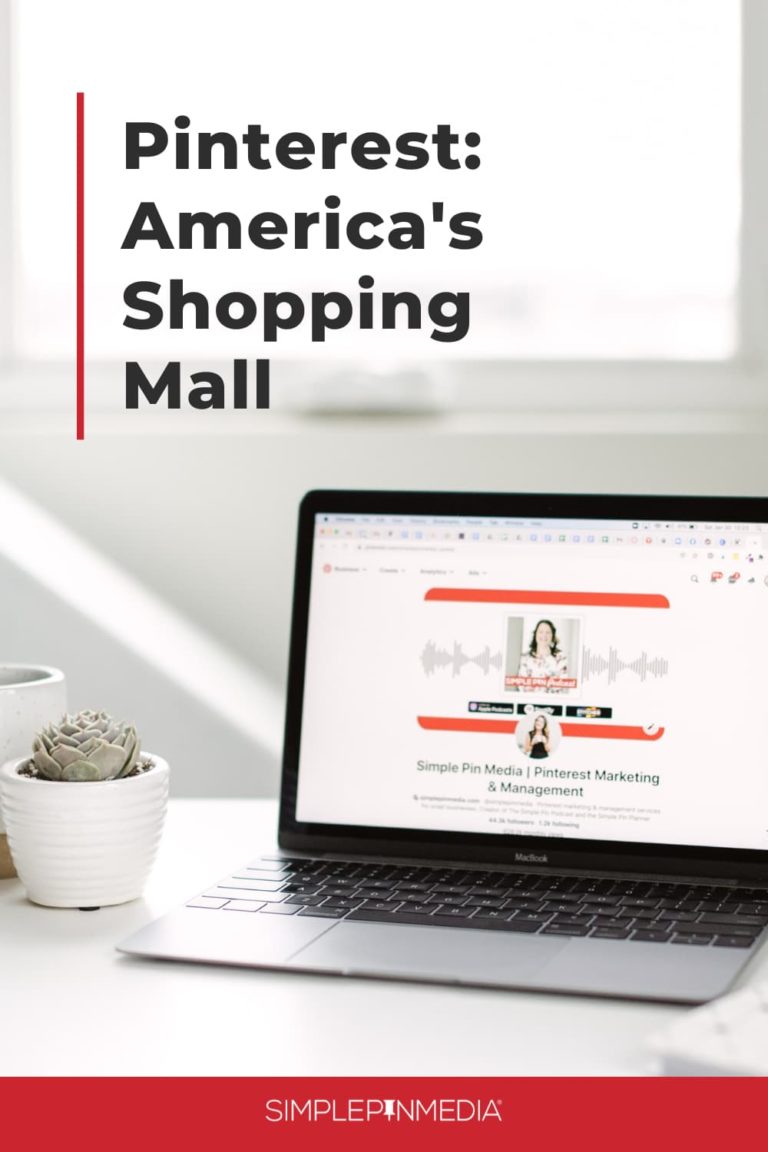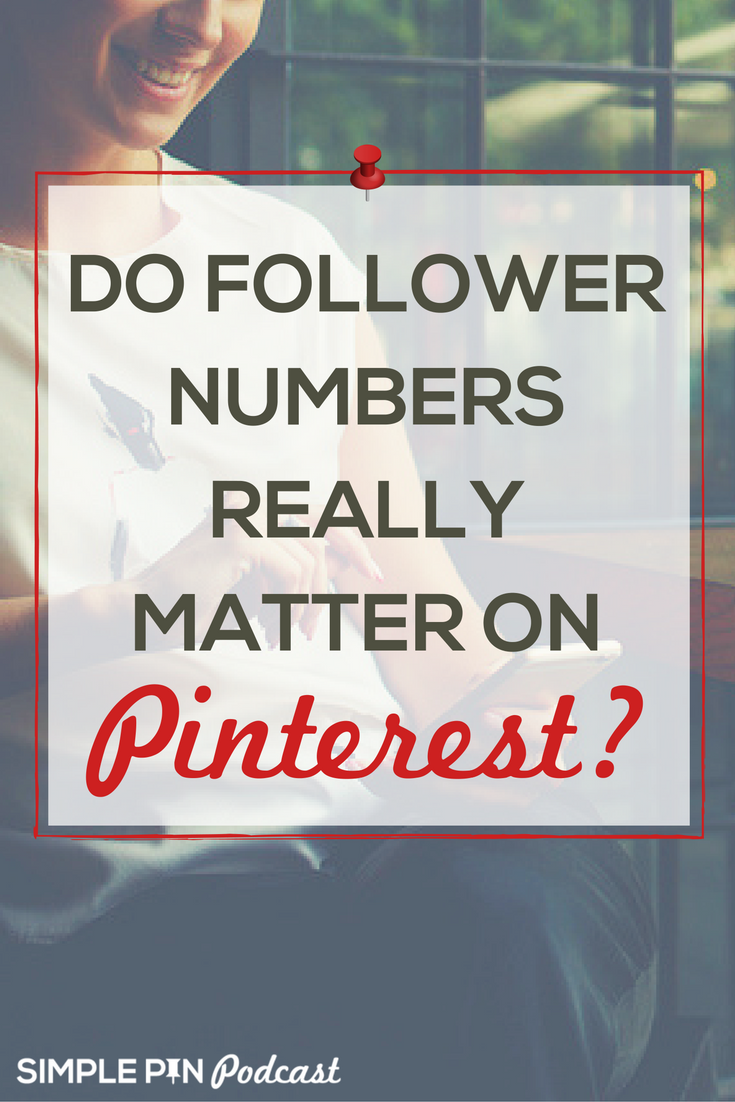We’ve all heard the popular books “_________ for dummies”. “Football for Dummies”, “Instagram for Dummies”, “Small Business for Dummies”. These books are designed to outline and explain specific topics/subjects as if they are explaining it to someone who has no idea how it works or what it means. In today’s episode, we are taking this approach with Pinterest for Dummies. We are bringing things down to a granular level and explaining Pinterest as if we are talking to someone who has no idea what the platform is.
At Simple Pin we often hear people say they don’t know what Pinterest is, how it works, or why it may be useful in their marketing strategy. Our hope today is that we can explain Pinterest to you in a way that helps it click.
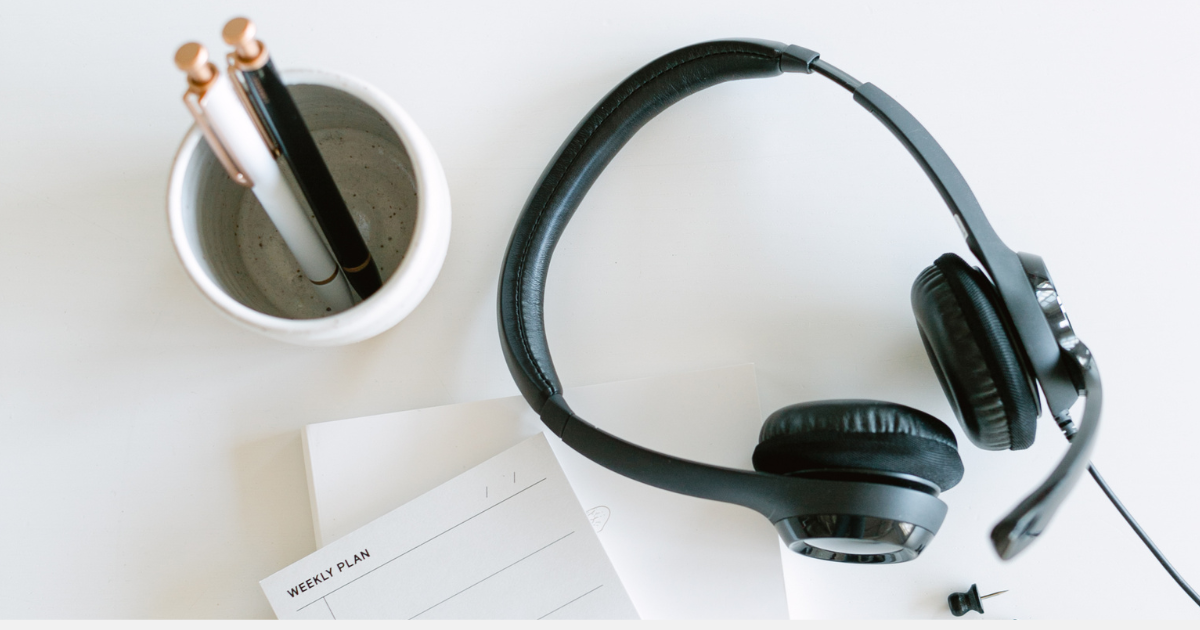
Getting Started on Pinterest
There are so many social media platforms out there to choose from when it comes to where you put your marketing efforts. There’s Instagram, TikTok, Facebook, LinkedIn, YouTube. The list could go on. With the sea of options, it’s no wonder you may feel overwhelmed when it comes to choosing which platforms to dive into for your business’ marketing. Most likely, all you can handle is learning one platform at a time. We get it!
Instagram and TikTok seem to get the most love. They are the “darlings of the day”. Engagement metrics on those platforms are high. You get a lot of dopamine hits when you see likes and comments on your content. And they have their place, but these platforms have so much of the market share with not a lot of conversions. Pinterest is all about conversions which makes it a great marketing platform.
If you’re new to Pinterest and want an easy-follow step-by-step guide, grab our free 4-part video series by entering your information below.
Pinterest is the library, Instagram is the bar
Think of Pinterest as your digital vision board, where you can discover and save ideas for anything and everything. From home decor, to travel, to dreams, Pinterest is your creative playground. People use Pinterest when they want something new, but don’t have all the details figured out yet. They can search with words or images, or browse feeds of content they might like. When somebody finds an idea they’re into, they can save it for later or take action right away. And since Pinterest is a search and discovery platform, it can bring traffic now, in three months, and for years to come.
Pinterest is the library, and Instagram is the bar. Pinterest is a place where people want quiet so they can explore and find amazing ideas. They don’t want people to talk to them, just as if they were in a library. Instagram is a place where people want engagement. They want conversation and talking like they would find at a bar. If it’s quiet over on Instagram, people think it’s broken and they need to do more to increase engagement.
Setting up Your Pinterest Profile
If we’re going to help this click for you, the very first thing you need to do is create a Pinterest business account. Follow this easy step-by-step start guide. It’ll teach you how to pick a profile picture, complete your profile description, and create and organize a few boards.
You’ll hear the terms Pinterest profile or Pinterest page. The two essentially mean the same thing. People use those words interchangeably. Whenever somebody visits your profile, they get to see who you are and what you do. This is also the place where you put all your ideas, content, and products. This is similar to your Instagram or Facebook page. No one else can pin to this page. It is yours. Just like with Facebook and Instagram, no one else can save a post or a story to your page.
What is a pin?
Oftentimes you’ll hear someone say they “pinned something to Pinterest”. So what is a pin? Pins are the content that make up Pinterest. Every pin represents an idea from tutorials to recipes to product overviews.
You can create pins by uploading photos, videos, or a mix of both. People can find those pins and save the ones they love to their boards. Here’s the number one thing people miss when trying to understand Pinterest: the pins need to lead somewhere.
Unlike an Instagram post or TikTok, which doesn’t need to lead anywhere, pins need to link back to your product or page.
Platforms like Instagram are all about short-form content. People consume it in little bites. The shelf life of a post or a reel on Instagram is about 24 hours.
On Pinterest, people want to know more, and they are ready to consume a longer form of content. More videos, more blog posts, more details about the product. They don’t care about time. This means whatever you’re writing about can be old or new as long as it’s relevant.
Let’s walk through it. As a marketer on Pinterest, you pin an image of your product. There are some details in the description, but not much. That pin you’ve added to Pinterest needs to go somewhere. It needs to lead to the product so the person interested can find all the information they need on it. People will not react to your pin it like they do on Instagram. They’re not ready to engage. They’re not looking for something social. Remember, they’re in a library, not a bar.
The number one thing that annoys the user on Pinterest is if you do not link your image. They can’t go anywhere to explore more of what you are offering them. Make sure to add a destination link to all your pins.
What is a board?
As a pinner, a board is where you store all your “liked” pins. You’re scrolling, you find a pin you are interested in, and you save it to your preferred board.
As a business owner on Pinterest, a board is where you upload your pins. Say you’re a jewelry company, and you create a pin for gold earrings, you would want to upload/save that pin to a relevant board of yours (i.e. “gold jewelry”, “gold earrings”).
Here at Simple Pin, we like to think of boards as buckets. If you have specific content or products, you can put them into particular buckets that help organize your profile and make it easy for pinners to find what they’re looking for.
Related: A Guide To Writing Great Pinterest Descriptions
What Should You Pin?
So what kind of content or pins should you pin? This is where we can get lost in terminology. First, it’s important to note that pins and content kind of mean the same thing. However, the major difference between these two terms is a “pin” lives on Pinterest. “Content” lives on your website. People on Pinterest will learn what you’re up to through a static or video pin that leads to content on your website. If you remember that, you are golden.
Pay attention to trends, using the Pinterest Trends page. This will help you to know what to pin and when. The other thing to note is that when it comes to pinning, plan to start pinning content 90 days before a holiday or event. For example, you should start pinning content for the 4th of July at the end of April. Remember, pinners are planners. They start thinking and dreaming up ideas well before the time comes.
Related: Creating Content That Inspires and Stands Out On Pinterest
How Does the Pinterest Algorithm Work?
Anytime people start investing in social media marketing, one of the first questions they ask is how does the algorithm work? Yes, you have to have some understanding of it if you’re going to play the game. But don’t get too caught in the weeds.
Remember, Pinterest is all about inspiration. So the algorithm pays attentions to metrics like saves and outbound clicks. The more people save and engage with one of your pins, the more Pinterest will show it to new people.
Does this happen overnight? No, it takes a while. Don’t get discouraged if you aren’t seeing results right away. We always tell people that Pinterest is a slow burn. It is going to take time. That scares people. But if you give it the time, it will pay off in the long run.
We covered a lot here today. Get started with our step-by-step tutorial. There are three in-depth videos that walk you through how to get your Pinterest account set up, how to build your boards, and how to create your first pin. If at any point, you are struggling and are ready to give up, we are here to help you! Our number one goal is to make sure you succeed on Pinterest.
Get Your Pinterest Account Set Up
